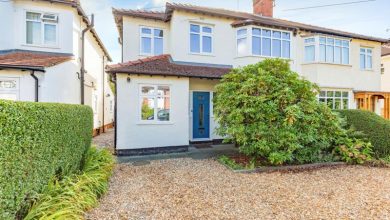Using Dubai’s Iconic Architecture as a Backdrop: Tips for Architectural Photography

Dubai is renowned for its breathtaking skyline, featuring some of the most innovative and iconic architectural designs in the world. From the towering Burj Khalifa to the sail-shaped Burj Al Arab, the city offers a rich tapestry of structures that serve as perfect backdrops for architectural photography. Whether you’re a professional photographer or an enthusiast, capturing the essence of Dubai’s architecture requires a blend of technical skills and creative vision.
In this guide, we’ll explore tips on how to use Dubai’s iconic architecture as a stunning backdrop for your photos.
Selecting the Best Architectural Backdrops
Dubai is home to a variety of architectural marvels, each offering unique photographic opportunities. Here are some of the city’s most iconic structures that make for stunning backdrops:
- Burj Khalifa: The tallest building in the world, the Burj Khalifa, is a must-visit for any architectural photographer. Whether you’re capturing the entire structure from a distance or focusing on its intricate details, the Burj Khalifa provides endless possibilities.
- Burj Al Arab: Known as the world’s only seven-star hotel, the Burj Al Arab’s sail-shaped design is instantly recognizable. Its location on its own artificial island makes it an ideal subject for both day and night photography.
- Dubai Frame: The Dubai Frame offers a unique perspective on the city, literally framing the contrast between old and new Dubai. This structure is perfect for creative compositions and storytelling.
- Cayan Tower: Also known as the “Twisting Tower,” Cayan Tower’s unique helical design creates interesting lines and shadows, making it a fantastic subject for architectural photography.
To truly capture the beauty of these structures, working with a freelance photographer in UAE who understands the nuances of architectural photography can be invaluable.
Best Times to Shoot: Capturing Architecture in Ideal Lighting
Lighting plays a crucial role in architectural photography, especially when shooting in a city like Dubai, where the light can vary dramatically throughout the day.
- Golden Hour: The golden hour, just after sunrise and before sunset, offers soft, warm light that highlights the textures and details of buildings. This time of day is perfect for capturing the warm tones of Dubai’s architecture, adding depth and dimension to your photos.
- Blue Hour: The blue hour, which occurs just before sunrise and after sunset, provides a cool, even light that contrasts beautifully with the warm artificial lights of the city. This time is ideal for capturing the city’s skyline, with its buildings illuminated against the twilight sky.
- Night Photography: Dubai’s architecture comes alive at night, with buildings like the Burj Khalifa and Burj Al Arab being beautifully lit. Night photography allows you to play with reflections, long exposures, and the vibrant colors of the city’s lights.
When shooting during these times, it’s essential to use a tripod to ensure stability and sharpness, especially in low-light conditions.
Techniques for Capturing Architectural Photography
To make the most of Dubai’s architectural backdrops, consider incorporating these techniques into your photography:
- Use a Wide-Angle Lens: A wide-angle lens is essential for capturing the full scale of Dubai’s massive structures. It allows you to include more of the scene in your frame, making it ideal for photographing skyscrapers and expansive cityscapes.
- Experiment with Perspectives: Don’t be afraid to shoot from unconventional angles. Low angles can make buildings appear even more imposing, while high angles can provide a unique overview of the city. Playing with perspectives can add a dynamic element to your photos.
- Focus on Details: While capturing the entire building is important, don’t overlook the details. Close-up shots of architectural elements like textures, patterns, and materials can create visually striking images that tell a deeper story about the design.
- Incorporate Leading Lines: Leading lines guide the viewer’s eye through the image, creating a sense of depth and direction. In Dubai, roads, pathways, and building lines can all serve as leading lines that draw attention to the architecture.
- Use Reflections: Dubai’s many water features, such as fountains and the Arabian Gulf, offer opportunities to capture reflections of the city’s architecture. Reflections add a creative twist to your images, making them more dynamic and engaging.
Adding a Human Element
Including people in your architectural photos can add scale and context to the buildings, making the images more relatable and dynamic. Here are some ways to incorporate a human element:
- Silhouettes: Shooting silhouettes against a brightly lit building or during sunset adds a dramatic effect to your photos. Silhouettes emphasize the scale and shape of the architecture while keeping the focus on the structure.
- Motion Blur: Capture the movement of people walking or cars driving by using a slower shutter speed. This technique adds a sense of energy and life to your images, contrasting the static nature of the buildings.
- Portraits with Architectural Backdrops: Using Dubai’s iconic architecture as a backdrop for portraits creates a powerful juxtaposition between the human subject and the man-made structure. This is particularly effective for fashion or lifestyle photography.
These techniques can also be applied to personal shoots, such as maternity photography services in Dubai, where the city’s architecture can serve as a stunning backdrop for capturing special moments.
Conclusion
Dubai’s iconic architecture offers a wealth of opportunities for photographers looking to capture the city’s unique blend of modernity and tradition. By selecting the right locations, shooting at the ideal times, and employing creative techniques, you can create stunning images that showcase the beauty and innovation of Dubai’s skyline. Whether you’re shooting for professional purposes or personal enjoyment, Dubai’s architectural landscape is sure to inspire and challenge you as a photographer.



